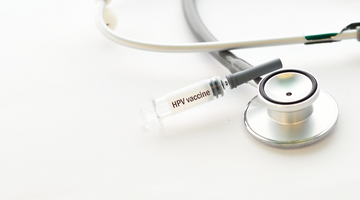What are the common symptoms of gynecological cancers?

Cancer that begins in the female reproductive organs is known as gynecological cancer and can affect the ovaries, uterus, cervix, vulva, and vagina. In this article, we’ll review the most common types of gynecological cancer, their symptoms, risk factors, and prevention strategies.
Types of gynecological cancer
Endometrial cancer
Also known as uterine cancer, endometrial cancer is the most common type of gynecological cancer. Abnormal vaginal bleeding could be a warning sign. Risk factors include:
- Being of significant weight
- Diabetes
- High blood pressure
- Family history of endometrial or colon cancer
- Taking estrogen without progesterone
- Experiencing late menopause (older than 52)
If you’re experiencing concerning symptoms, contact your primary care provider for a pelvic exam. If results are abnormal or you have abnormal vaginal bleeding, you may need follow-up tests like an endometrial biopsy or an ultrasound. Treatment options include surgery, radiation therapy, chemotherapy, or hormone therapy.
Ovarian cancer
Ovarian cancer tends to affect postmenopausal women. Symptoms may not appear until the cancer is in a more advanced stage. Possible persistent symptoms, which are symptoms that last three weeks or more) include:
- Changes to your bowel movements
- Abdominal bloating
- Nausea
- Indigestion
- Weight loss
- Back pain
- Fatigue
- Frequent urination
Risk factors for ovarian cancer include:
- BRCA gene
- Family history of ovarian cancer in your mother, daughter, or sister (get to know your family history!)
- Obesity
- Endometriosis
- Postmenopausal hormone therapy
Ovarian and pelvic examinations can help diagnose ovarian cancer. If physical exams are abnormal, typically follow-up tests include a pelvic ultrasound or CT scan.
Once diagnosed with ovarian cancer, treatment will depend on the type of ovarian cancer, its stage and severity, and your health. The treatment plan can also be affected by whether cancer has just been diagnosed or has recurred. Surgery and chemotherapy are the most common treatments. Other options include radiation therapy, hormone therapy, and targeted therapy.
Cervical cancer
When cancer cells develop in the cervical tissue, it’s known as cervical cancer. Before cancer cells begin to grow and spread in the cervix and surrounding area, normal cells will change, which is known as dysplasia. These abnormal cells can become cancerous but are not always a sign of cancer. Human Papillomavirus (HPV) causes most cervical cancers. Typically, early-stage cervical cancer does not result in symptoms. More advanced-stage cervical cancer can produce the symptoms including:
- Abnormal bleeding after sex or between periods
- Pelvic pain
- Dull backache
- Discomfort during sex
- Vaginal discharge that smells foul
Cervical cancer is most common in women between 30 and 45 years, though it is possible at other ages. Risk factors include:
- Having Human Papillomavirus (HPV)
- Using oral contraceptives (the pill) for an extended period
- Having multiple children
- Smoking
Diagnosis begins with a pelvic exam and general physical. For further testing, your primary care provider might recommend an HPV test, colposcopy, and biopsy. You can treat cervical cancer with surgery, radiation therapy, and chemotherapy.
Uterine sarcoma
When cancer cells form in the uterine muscles or other tissues supporting the uterus, it’s known as uterine sarcoma. Possible symptoms include:
- Abnormal vaginal bleeding patterns
- Abdominal pain or feeling of fullness
- Frequent urination
- A mass in the vagina
Risk factors include previous radiation therapy to the pelvis and the use of Tamoxifen, a drug used to treat breast cancer. Your primary care provider will run a pelvic exam, pap smear test, or ultrasound for diagnosis. Surgery is the most common treatment for uterine sarcoma. The doctor will remove as much cancer as possible before deciding on further treatment.
Vulvar cancer
Vulvar cancer is one of the less common gynecological cancers. It’s a skin cancer of the lips and the external area around the vagina. Knowing your vulva will help you recognize potential problems. Common symptoms include:
- Changes in color
- Lumps
- Itchiness
- Abnormal vaginal bleeding or discharge
- Pain or burning sensation
- Open sore(s) lasting a month or more
HPV, many sexual partners, getting older, smoking, and lichen sclerosus (a chronic skin condition) can all increase your risk of vulvar cancer. Diagnostic tests include a physical exam, pelvic exam, pap test, biopsy, or imaging tests like MRI. Possible treatments include surgery, radiation therapy, and chemotherapy. Treatment plans may depend on how advanced the cancer is and where it has spread.
Vaginal cancer
Vaginal cancer is an internal skin cancer that can be challenging to detect. The original location of cancer cells determines the type of vaginal cancer. A partner might be able to recognize that it feels different during sex. It’s worth checking out anything that doesn’t feel normal. Symptoms may not show up in the early stages. Possible signs of vaginal cancer include:
- Vaginal pain
- Abnormal vaginal bleeding
- Watery vaginal discharge
- Problems urinating or with bowel movements
- Lumps in the vagina
Your risk of vaginal cancer increases if you have a weakened immune system (which can be exacerbated by smoking), a persistent HPV infection, or are 60 years or older. You can prevent many types of vaginal cancer with the HPV vaccines.
Regular pelvic exams and pap tests can help detect cancer earlier. Typical treatments for vaginal cancer include surgery or radiation therapy. Your treatment plan may depend on:
- Possible damage to other organs
- Your medical history
- The type, stage, and size of the cancer
If you’ve had a hysterectomy or radiation treatment to your pelvis previously, it can affect how your treatment is determined. Regular screening can help with early detection, leading to more effective treatment.
As always, if you detect something abnormal with your reproductive system, discuss your concerns with your primary care doctor for further investigation, diagnosis, and treatment.
Keep Reading

What causes cervical cancer in women?
Aug 23

How the BRCA gene affects fertility and pregnancy
Sep 30

What is HPV? How often should I get tested?
May 28








